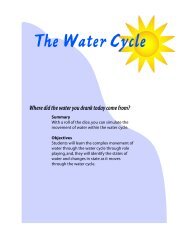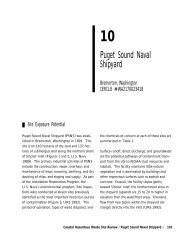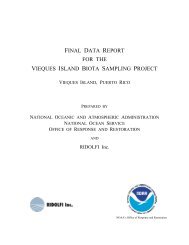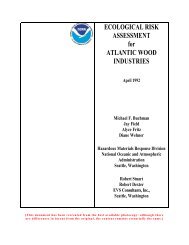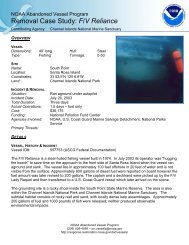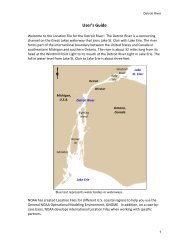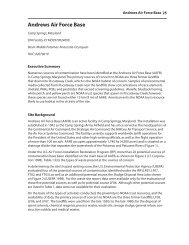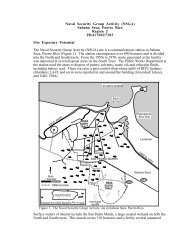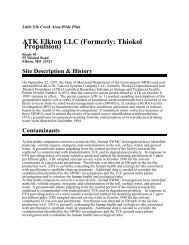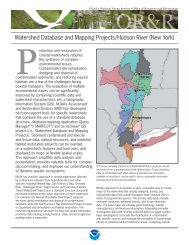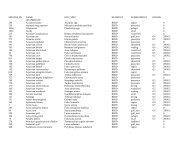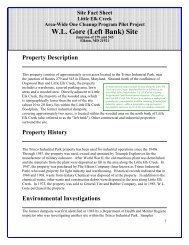The Coastal Resource Coordinator's Bioassessment Manual
The Coastal Resource Coordinator's Bioassessment Manual
The Coastal Resource Coordinator's Bioassessment Manual
Create successful ePaper yourself
Turn your PDF publications into a flip-book with our unique Google optimized e-Paper software.
HAZMAT 93-1 Role of <strong>Bioassessment</strong><br />
of contaminated media from the site in the laboratory with clean media, or by collecting a<br />
number of samples of contaminated media from different spatial areas that are known to<br />
have different chemical concentrations. <strong>The</strong> samples representing the range of chemical<br />
concentrations obtained by either approach are tested using one or more bioassessment<br />
techniques to determine which concentrations are toxic and which are not. <strong>The</strong> lowest<br />
contaminant concentration found to be toxic (induce the designated biological endpoint) is<br />
determined to be the target level for cleanup.<br />
One example of this approach is the apparent effects threshold (AET), which uses field<br />
chemistry data (concentrations of toxic substances in sediments) and at least one biological<br />
indicator of injury (sediment toxicity tests, altered benthic infaunal abundance,<br />
bioaccumulation, histopathology, etc.) to determine the concentration of a given<br />
contaminant above which statistically significant biological effects would always be<br />
expected (Tetra Tech, 1986). <strong>The</strong> AET approach was developed in Puget Sound,<br />
Washington to establish chemical criteria for disposal of dredged material, and is being<br />
considered by U.S. Environmental Protection Agency (EPA) Region 10 for use in<br />
establishing cleanup target levels in that area. As currently developed, the AET approach<br />
should be used on a site-specific basis and can require extensive data collection. However,<br />
by carefully selecting one or a few appropriate bioassessment procedures, the approach can<br />
be cost effective at many sites. Further, if similar data are collected at different sites within a<br />
region that have similar habitat characteristics, the data may be suitable to combine into a<br />
regional database that might be used to develop standards with broad application.<br />
A second approach that is particularly useful where the suite of chemicals is complex (e.g.,<br />
landfills and hazardous waste recycling sites) is to use the biological responses measured by<br />
one or more of the bioassessment techniques directly to determine which areas of a waste<br />
site need to be cleaned up. For example, it might be agreed that all sediments in a stream<br />
that were significantly toxic in the applicable toxicity test (irrespective of any chemical<br />
measurement) would be treated to eliminate the toxicity. No remedy would be applied to<br />
sediments that were not significantly toxic. This approach was suggested by investigators<br />
at the Rocky Mountain Arsenal waste site where toxicity tests results showing toxicity above<br />
a pre-selected level were used with a statistical mapping technique (kriging) to define<br />
contaminated areas for potential cleanup. (Thomas et al., 1986).<br />
In both approaches discussed above, it is important to note that there are currently no<br />
guidelines for selecting appropriate tests to determine target levels or to select the endpoint<br />
of those tests that have more than one possible endpoint. To use bioassessment procedures<br />
2-5 July 2003



